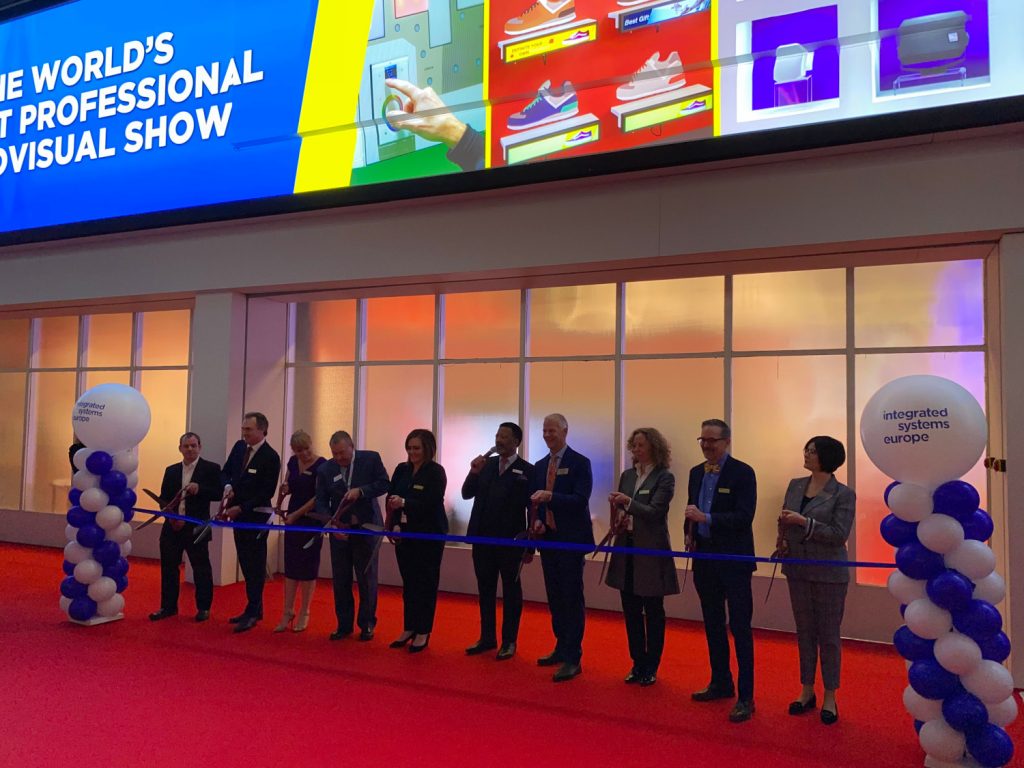I’ve always heard Integrated Systems Europe (ISE) is a must-attend trade show because it begins the conversation about trends in our industry. Walking into ISE 2020—my first trip to an ISE—it was no surprise to find that many burgeoning trends were on display.
AV-over-IP was leading those conversations. Back when I entered this industry, talk of convergence was still happening, even though I, as an end user and AV operator, had been already using AV-over-IP solutions regularly. The convergence had already come—it was just that some manufacturers were ahead of the curve. At ISE 2020, meanwhile, AV-over-IP solutions could be found in almost every hall. Video manufacturers were streaming 4K video over the network; audio manufacturers were delivering transporting sound with zero latency; and others were demonstrating complete solutions offering independent audio and video streams in a single package. Clearly, we’ve reached a heyday of networked systems.
One of the main differentiators among manufacturers playing in this space is whether they support 1Gb or 10Gb solutions, as well as how well they play with others with whom they’re sharing these networks. This has initiated conversations about creating a new, open AV-over-IP networking standard for the commercial AV industry. The bottom line is, manufacturers will continue to push the envelope on new products, while alliances form and try to bring standards and “order” to our industry.
Projection mapping was another major trend on the show floor, and you seemingly couldn’t get away from it! Although the commercial AV market appears to be turning more towards direct-view LED, I think projection mapping stole the show at ISE 2020. With one- and three-chip DLP laser projectors leading the way, we’re finding projectors being installed, as always, in traditional spaces like higher education; however, I believe what’s keeping projection alive are its flexibility, power and capability of creating a fully immersive experience.
It’s worth noting that you can pair projection with interactive augmented reality (AR) and distribute content with SDVoE-based solutions. We witnessed this on the show floor at ISE. The possibilities are truly endless, as evidenced by projection mapping being used to grab our attention not only in the halls, but also outside the RAI.
Finally, I saw marked growth in bring-your-own-device (BYOD) setups in the unified communications and collaboration (UC&C) hall. This was to be expected, as people want to collaborate and want to communicate on devices with which they are comfortable. Interactive whiteboards have been a major player in the UC&C space and they continue to grow; that’s especially true now that BYOD workspaces are becoming more common and UC&C packages are opening themselves up.
At ISE, the BYOD conversation rose to the fore, with certain manufacturers moving no longer to limit you to specific devices. With the solutions that I saw, workers will be able to collaborate with team members and be successful no matter what their choice of device might be—from iOS-based devices to Androids. This trend seemed consistent across the board.
I’m sure we’ll continue to have conversations about these trends—and many more—as we work our way through trade-show season this spring and as new products roll out. What trends stood out to you at ISE 2020? Join the conversation with #AVtweeps on Twitter by tagging @soundandcomm and @thesmoothfactor.
To see more of my ISE 2020 coverage, click here for daily vlogs.
